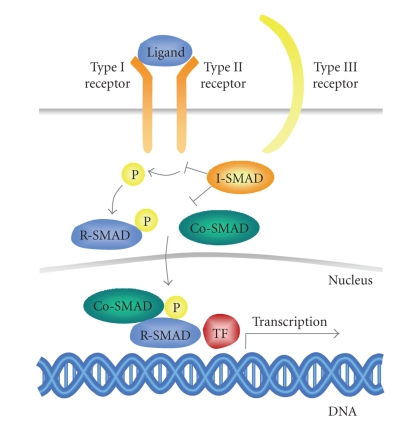Figure 1.
TGF-β signaling cascade. Upon ligand binding the constitutively active kinase of the type II receptor transphosphorylates and activates the type I receptor. Type III receptors lack any kinase activity but they act as accessory receptors and facilitate ligand binding to the type I and II receptors. Downstream signaling is mediated via R-SMADs which are phosphorylated by the activated type I receptor and form a complex with CoSMADs. This complex translocates to the nucleus where it induces transcription of downstream signaling. I-SMAD proteins represent important negative feedback structures, since they can block the signaling via competitive binding to the type I receptors or R-SMADs. R-SMAD: receptor-regulated SMAD; CoSMAD: common mediator SMAD; I-SMAD: inhibitory SMAD; TF: transcription factor.

